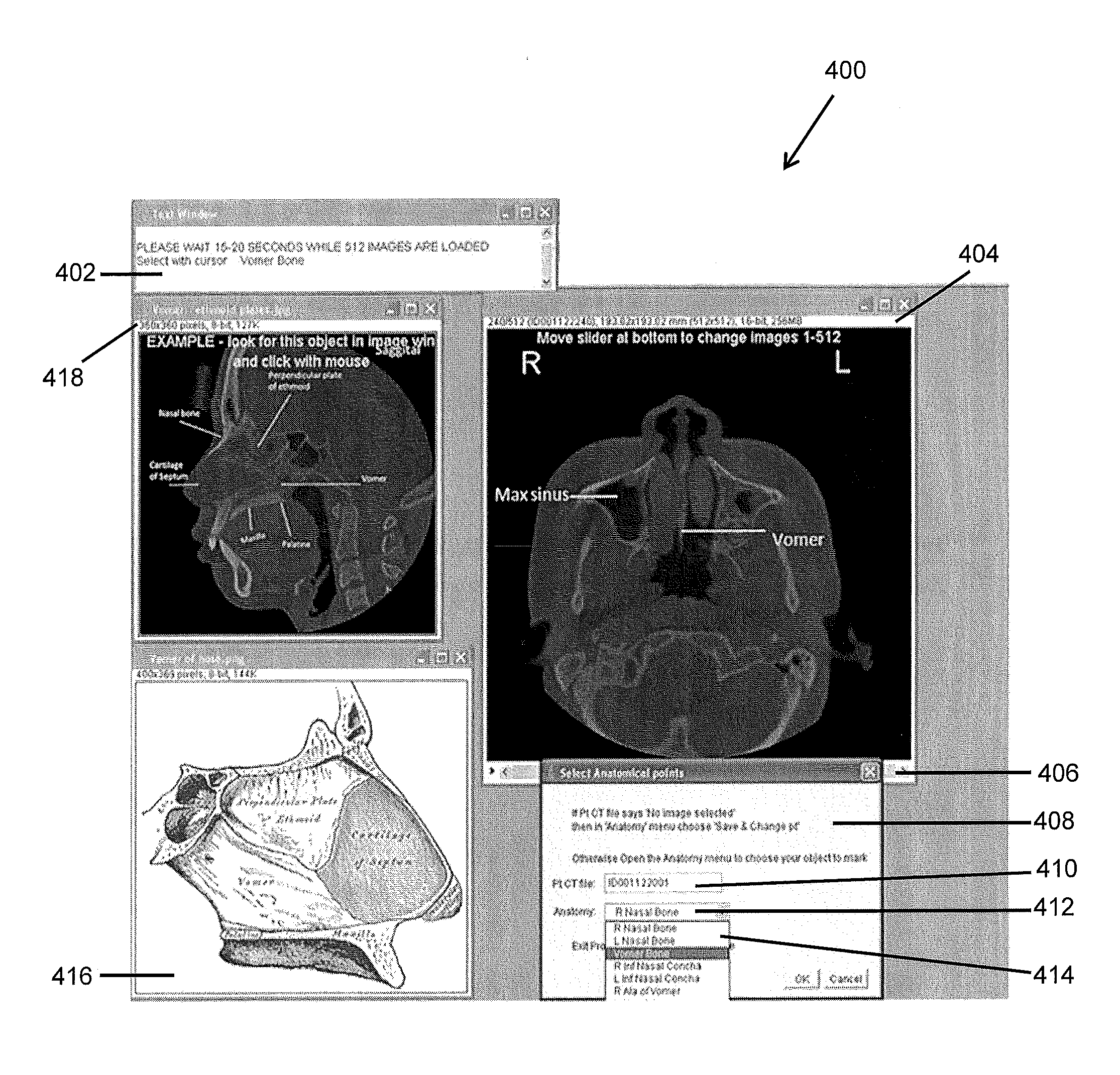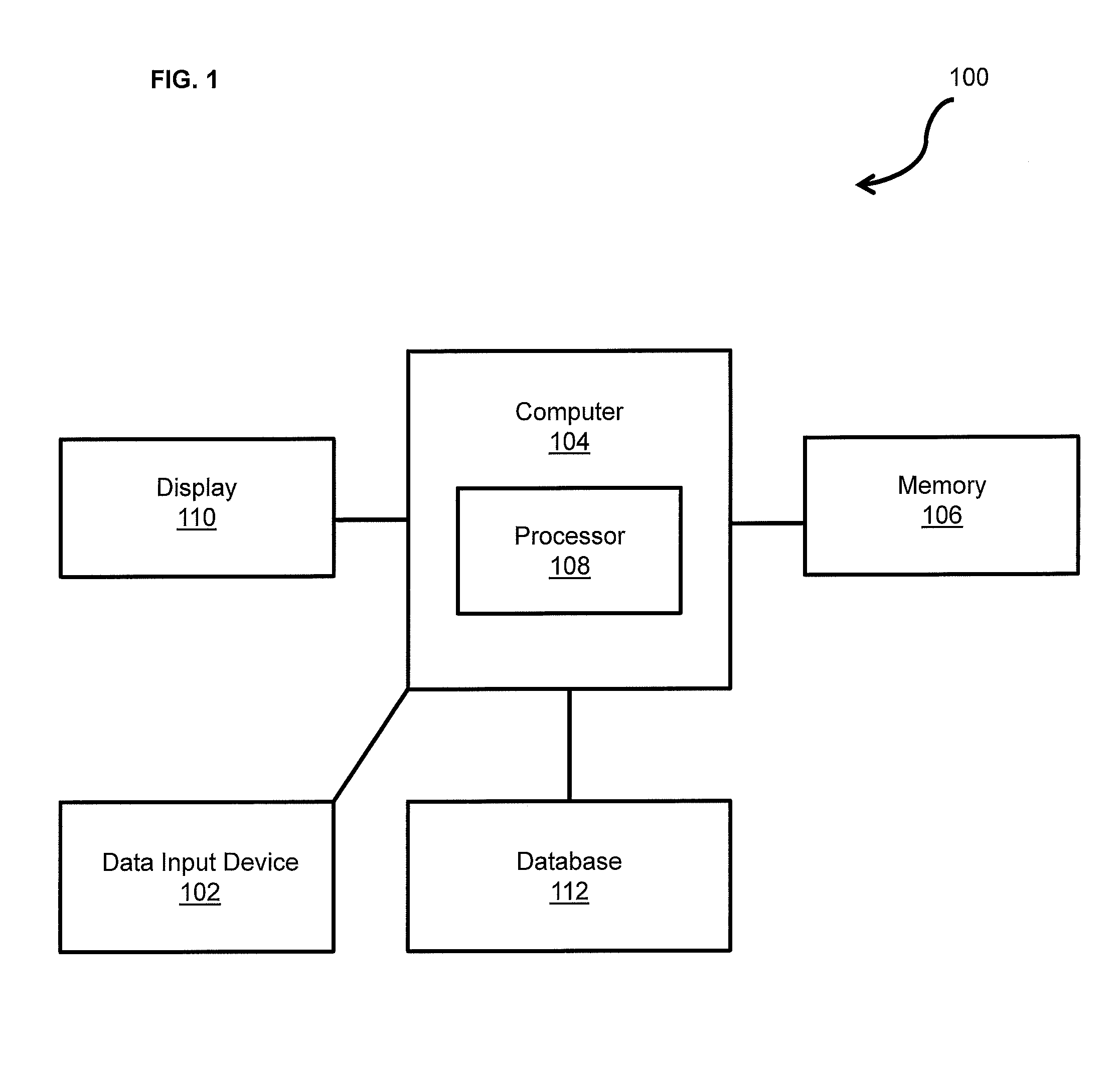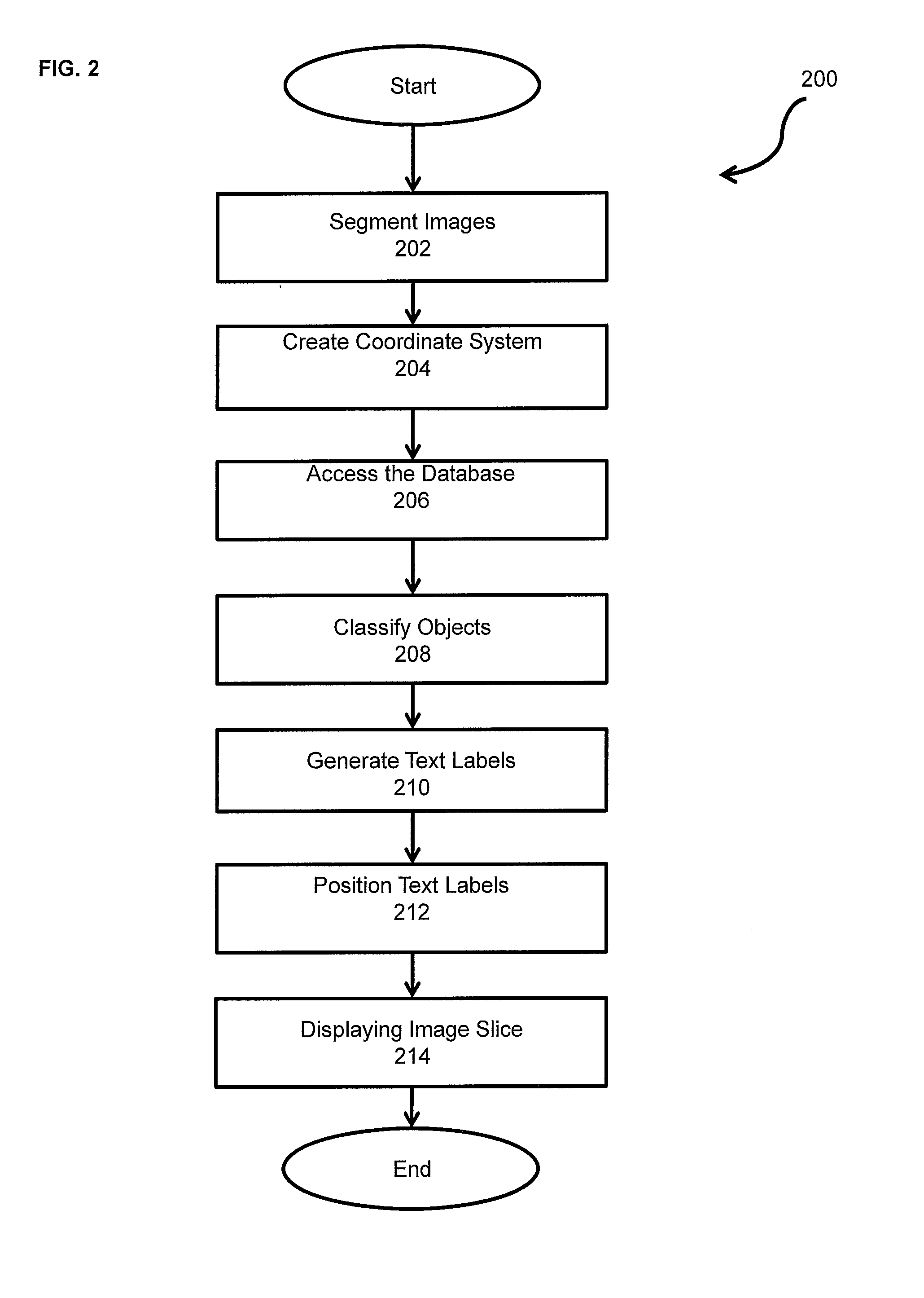System and methods for anatomical structure labeling
- Summary
- Abstract
- Description
- Claims
- Application Information
AI Technical Summary
Benefits of technology
Problems solved by technology
Method used
Image
Examples
Embodiment Construction
[0031]The present invention is directed to an imaging system 100 for labeling anatomical information on an image. The two-dimensional images may be CBCT images, however CT images or MRI images are also contemplated.
[0032]A block diagram of the anatomical recognition system 100 is shown in FIG. 1. One or more images are generated using imaging equipment (not shown) and inputted via a data input device 102 into a computer 104 that includes a memory 106. The data input device 102 may be any computer input device, including a keyboard, mouse, trackball, and scanner, or anything that can transfer the images from the data input device 102 to the computer 104. Images can be transferred directly from the imaging equipment, or alternatively stored in memory 106 of a computer 104 and transferred from the memory 106 to the computer 104. The computer 104 may be any general purpose personal computer (“PC”), server, or computing system including web-based computer systems and applications, such a...
PUM
 Login to View More
Login to View More Abstract
Description
Claims
Application Information
 Login to View More
Login to View More - R&D
- Intellectual Property
- Life Sciences
- Materials
- Tech Scout
- Unparalleled Data Quality
- Higher Quality Content
- 60% Fewer Hallucinations
Browse by: Latest US Patents, China's latest patents, Technical Efficacy Thesaurus, Application Domain, Technology Topic, Popular Technical Reports.
© 2025 PatSnap. All rights reserved.Legal|Privacy policy|Modern Slavery Act Transparency Statement|Sitemap|About US| Contact US: help@patsnap.com



